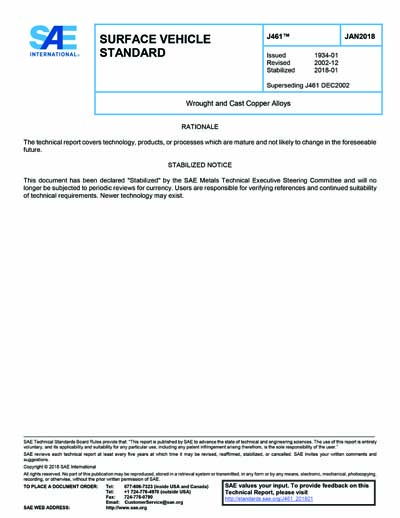Most recent
SAE J 461-2018
Wrought and Cast Copper Alloys
Factors influencing the uses of wrought copper and copper alloys concern electrical conductivity, thermal conductivity, machinability, formability, fatigue characteristics, strength, corrosion resistance, the ease with which alloys can be joined, and the fact that these materials are nonmagnetic. Copper and its alloy also have a wide range of rich, pleasing colors. The only other metal with such distinctive coloring is gold. These materials are all easily finished by buffing, scratch brushing, plating or chemically coloring, or clear protective coating systems. When it is desired to improve one or more of the important properties of copper, alloying often solves the problem. A wide range of alloys, therefore, has been developed and commercially employed, such as the high copper alloys, brasses, leaded brasses, tin bronzes, heat treatable alloys, copper-nickel alloys, nickel silvers, and special bronzes. nickel silvers, and special bronzes.
Society of Automotive Engineers [sae]

